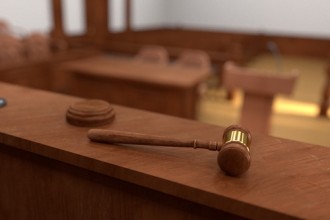August 22, 2011
CyberSource v. Retail Decisions, Inc.
In CyberSource v. Retail Decisions, Inc., No. 2009-1358 (August 16, 2011), the Federal Circuit held that an Internet-related method claim and a “computer readable medium” claim both fail to recite patent-eligible subject matter under 35 U.S.C. § 101, potentially calling into question the validity of many patented claims to devices programmed with software.
CyberSource’s U.S. Patent No. 6,029,154 discloses a method for verifying credit card transactions over the Internet. The method is typically implemented with software on a computer-readable medium such as a hard disk or floppy disk. The panel construed claims 2 directed to an apparatus and 3 directed to a method
Claim 3 provides:
3. A method for verifying the validity of a credit card transaction over the Internet comprising the steps of:
a) obtaining information about other transactions that have utilized an Internet address that is identified with the [ ] credit card transaction;
b) constructing a map of credit card numbers based upon the other trans-actions and;
c) utilizing the map of credit card numbers to determine if the credit card transaction is valid.
The CAFC affirmed the district court’s holding that claim 3 failed to meet the machine-or-transformation test. The CAFC’s analysis, however, did not end there. Stating that the Supreme Court’s decision in Bilski makes clear that a patent claim’s failure to satisfy the machine-or-transformation test is not dispositive of the § 101 query, the panel proceeded to find that claim 3 “is drawn to an unpatentable mental process – a subcategory of unpatentable abstract ideas…All of claim 3’s method steps could be performed in the human mind, or by a human using a pen and paper.” The CAFC distinguished In re Abele, 684 F.2d 902, 908 (CCPA 1982), as having held a claim to be patentable that included both mental steps and physical steps.
The CAFC then addressed claim 2:
2. A computer readable medium containing program instructions for detecting fraud in a credit card transaction between a consumer and a merchant over the Internet, wherein execution of the program instructions by one or more processors of a computer system causes the one or more processors to carry out the steps of:
a) obtaining credit card information relating to the transactions from the consumer; and
b) verifying the credit card information based upon values of plurality of parameters, in combination with information that identifies the consumer, and that may provide an indication whether the credit card transaction is fraudulent,
wherein each value among the plurality of parameters is weighted in the verifying step according to an importance, as determined by the merchant, of that value to the credit card transaction, so as to provide the merchant with a quantifiable indication of whether the credit card transaction is fraudulent,
wherein execution of the program instructions by one or more processors of a computer system causes that one or more processors to carry out the further steps of;
[a] obtaining information about other transactions that have utilized an Internet address that is identified with the credit card transaction;
[b] constructing a map of credit card numbers based upon the other transactions; and
[c] utilizing the map of credit card numbers to determine if the credit card transaction is valid.
Rejecting CyberSource’s argument that claim 2 is patent-eligible per se as reciting a “manufacture” under § 101, the CAFC stated that the claim “recites nothing more than a computer readable medium containing program instructions for executing the method of claim 3…Regardless of what statutory category…a claim’s language is crafted to literally invoke, we look to the underlying invention for patent-eligibility purposes. Here, it is clear that the invention underlying both claims 2 and 3 is a method for detecting credit card fraud, not a manufacture for storing computer-readable information.”
Citing Abele and Gottschalk v. Benson, 409 U.S. 63 (1972), the CAFC explained that “…purely mental processes can be unpatentable, even when performed by a computer…This is entirely unlike cases where, as a practical matter, the use of a computer is required to perform the claimed method.” The CAFC distinguished the methods at issue in SiRF Tech., Inc. v. Int’l Trade Comm’n, 601 F.3d 1319 (Fed. Cir.2010) by observing that the methods could not be performed without the use of a GPS receiver. The CAFC also distinguished the decision in Research Corp. Techs. v. Microsoft Corp., 627 F.3d 859 (Fed.Cir. 2010): the method at issue required the manipulation of computer data structures (pixels and a mask) and the output of a modified computer data structure (a halftoned digital image). Therefore the method “could not, as a practical matter, be performed entirely in a human’s mind.”
The CAFC’s approach to data manipulation in this decision invites questions as to how the formatting and volume of data might affect the patentability of a method for manipulating the data. The question also arises as to how manipulated data might qualify as “transformed” data for purposes of the machine-or-transformation test. Analyzing claim 2 as a process claim, CyberSource asserted that the “map” of credit card numbers constructed from IP addresses is a patentable transformation of data. The CAFC, however, noted that the data is manipulated merely to organize it in a logical way to enable subsequent tests for fraud and so does not satisfy the transformation prong of machine-or-transformation test.



































